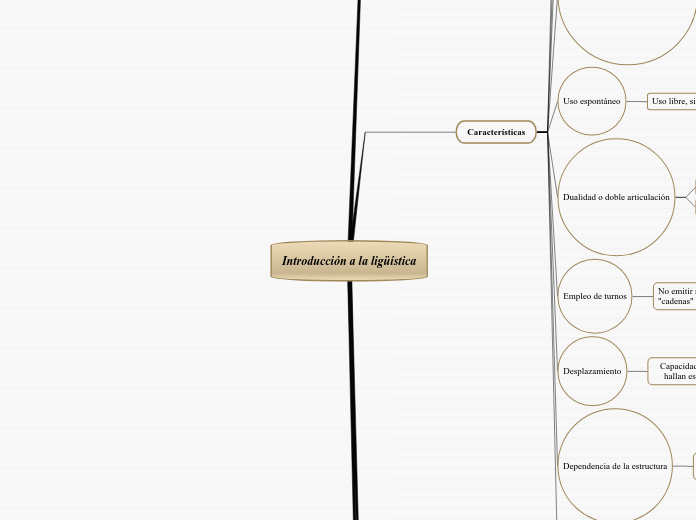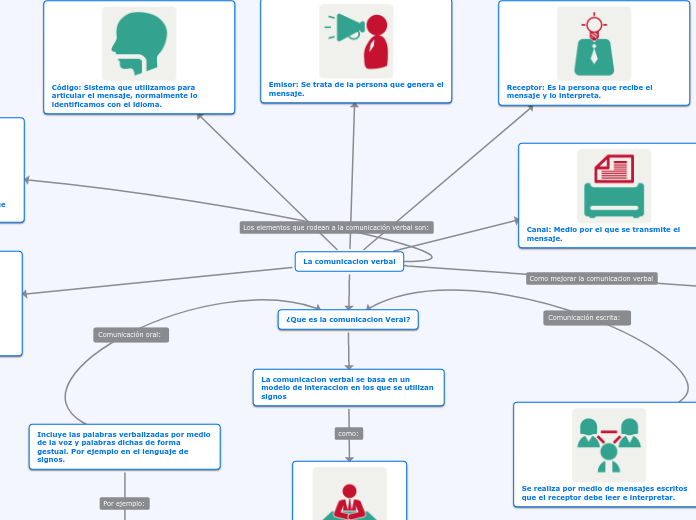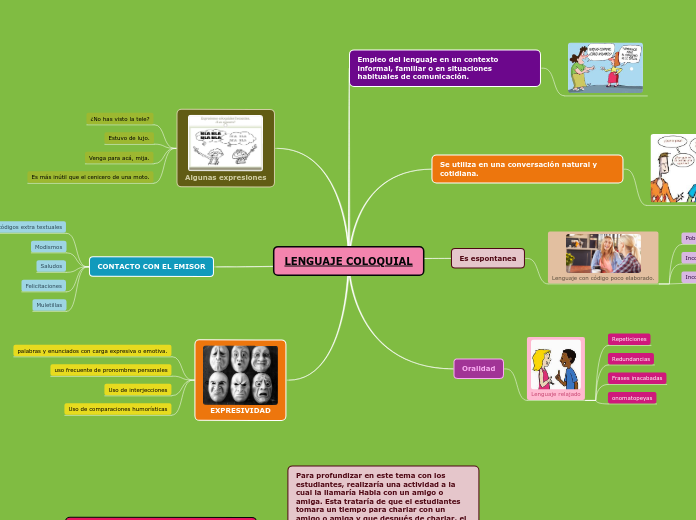Introducción a la ligüística
To name your story, you have to think about the overall message and what you want your audience to understand from the story. Also, make it relevant and easy to remember.
Signo lingüístico
Mutuabilidad
Convencionalidad
Carácter lineal
Se compone de significante y significado
Significado
Imagen mental
Significante
Secuencia de sonidos
Niveles y dimensiones
Dimensiones
Uso
Contenido
Forma
Objeto de estudio
Intenciones de los hablantes
Estructura de la información
Significado, familias de palabras
Formación de palabras, frases y oraciones
Sonidos
Alófonos
Fonemas
Niveles del lenguaje
Pragmática-discursivo
Se ocupa de cómo las hablantes construyen sus enunciados a partir de sus intenciones
Semántica
Estudia el significado de las palabras según su las relaciones que establezcan entre sí en el sistema de la lengua
Morfología y sintaxis
Sintaxis
Estudia cómo se unen las palabras para formar frases y oraciones y a su vez se ocupan de su clasificación
Morfología
Encargado de definir las categorías gramaticales
Fonética y fonología
Fonología
Está encargada del aspecto abstracto de los sonidos
Fonética
Se ocupa del plano material
Características
Creatividad
Decir y entender lo que nunca antes se ha oído ni dicho
Dependencia de la estructura
El contenido de un mensaje varía según el orden de los componentes de la emisión
Desplazamiento
Capacidad para referirse a hechos que no se hallan espacial o temporalmente presentes
Empleo de turnos
No emitir mensajes simultáneamente, sino en "cadenas"
Dualidad o doble articulación
No se representan en la misma unidad
Forma y contenido son separables
Uso espontáneo
Uso libre, sin presión
Transmisión cultural o por tradición
El sistema para comunicarse pasa de una generación a otra, se enseña
Semanticidad
Uso de símbolos para referirse a un elemento
Arbitrariedad
Empleo de símbolos neutrales
No hay relación entre la palabra y lo que representa
Uso de canal vocal-auditivo
Producción de sonidos con los órganos vocales y recepción por el mecanismo auditivo.
Conceptos básicos
In the beginning of the story (or the exposition), you will need to introduce the setting and characters. You might also want to introduce the main conflict. This part of the story is important because it gives the reader necessary background information and maybe even a first insight into a character’s personality.
Habla
Materialización de la lengua, cuando se utiliza el sistema de signos para emitir enunciados en una situación específica.
Dialeto
Corresponde a las variantes que posee una misma lengua
Lengua
The setting (time & place) of a story can change throughout the plot.
Es el conjunto de signos (palabras) y reglas para combinarlos
Sensory details include sight, sound, touch, smell, and taste. These details are important because they create depth in your setting.
See a few examples below:
- the smell of fresh bread
- the scent of freshly cut grass
- rain falling onto the windshield etc.
Lenguaje
Characters are essential to a good story. Usually, the protagonist(s) is/are the most affected by the plot. Introduce a character by focusing on their actions, interests, and occupation, as the physical appearance doesn't make a difference in most cases.
Capacidad innata que poseen todos los seres humanos para comunicarse.
Type in the name of your character.










